

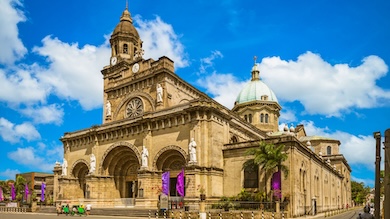

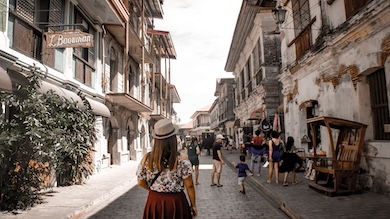
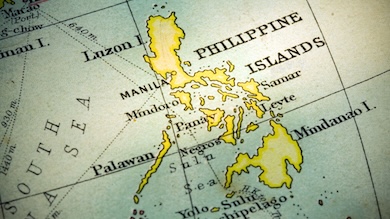

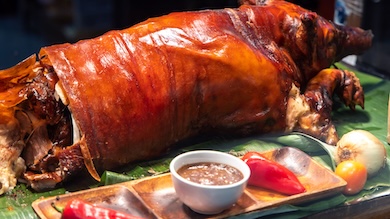



Understanding the Culture of the Philippines
Filipino culture is more than tradition — it’s a way of living that reflects centuries of history, layered influences, and a deep sense of community. To understand the Philippines is to understand how culture shapes everything: from how people greet one another to how festivals are celebrated, families are formed, and faith is practiced.
At its heart are values like hospitality, close family ties, and spiritual devotion. But Filipino culture is also diverse and evolving — a blend of Indigenous roots, colonial legacies, and modern creativity. In this foundation page, we look at the everyday customs and larger cultural forces that give the Philippines its unique rhythm and soul.
Whether you're planning a visit, building a life here, or simply curious, understanding Filipino culture will help you connect with the people and place in a far deeper way.

Warmth & Hospitality
Few things define Filipino culture more clearly than its warmth. Whether you’re a first-time visitor or a returning guest, you’ll likely be welcomed with a smile, a plate of food, and a genuine sense that you belong. Hospitality isn’t just good manners here — it’s a deeply held value that spans cities and provinces, rich and poor alike.
A Culture of Welcome – Guests are treated like extended family. It's common to be offered meals, introduced to relatives, or even invited to stay the night — often without any prior notice.
Bayanihan Spirit – This centuries-old tradition of communal unity and mutual assistance lives on today, seen in everything from disaster response to neighborhood efforts to help a friend in need. Hospitality here isn’t just personal — it’s collective.
Fiesta Hospitality – Nowhere is this spirit more alive than during festivals. Even strangers are invited into homes to eat, talk, and celebrate — a living tradition that turns cultural pride into shared experience.

Family as the Core of Society
Family is the foundation of Filipino culture, influencing traditions, values, and social interactions:
Extended Family Bonds – Beyond parents and children, family includes grandparents, aunts, uncles, and even close friends.
Utang na Loob (Debt of Gratitude) – A strong sense of obligation to support family members in times of need.
Balikbayan Tradition – Filipinos working abroad (OFWs) return home with gifts, reinforcing family connections and responsibilities.

Faith & Spirituality
In the Philippines, faith is more than a belief system — it’s a way of life. Religion weaves its way through daily routines, public holidays, family traditions, and even national identity. For many Filipinos, spirituality offers not just comfort, but also a deep sense of meaning, belonging, and resilience.
A Catholic Nation – Around 80% of the population identifies as Catholic, a legacy of more than three centuries of Spanish rule. Churches remain central to community life, and many towns are built around their parish.
Simbang Gabi & Holy Week – Early morning masses in the lead-up to Christmas and the solemn rituals of Holy Week reflect how faith moves from the private to the public, often involving entire communities.
Sacred Sites & Pilgrimages – From the bustling crowds at Quiapo Church to the quiet reverence of Manaoag, Filipinos travel far to connect with the divine. Pilgrimage here is not just a journey — it’s an expression of devotion, hope, and healing.

Festivals & Celebrations
In the Philippines, festivals are more than colorful events — they’re living expressions of history, faith, and togetherness. Every region has its own celebrations, often rooted in centuries-old traditions that still bring communities together through music, dance, food, and shared joy. These moments offer a vivid glimpse into the heart of Filipino culture, where gratitude and celebration go hand in hand.
Sinulog & Ati-Atihan – Among the most famous festivals, these honor the Santo Niño (Child Jesus) through street dancing, tribal costumes, and vibrant parades. They mix Catholic devotion with pre-colonial rituals, showing how traditions merge over time.
Panagbenga Festival – Held in Baguio each February, this "Season of Blooming" is a floral showcase of creativity and cultural pride, reflecting both nature and identity in the Cordillera region.
Pahiyas Festival – In Lucban, Quezon, locals decorate their homes with colorful displays of rice, fruits, and vegetables to give thanks for a good harvest — a tradition that turns gratitude into art.

How Filipino Culture Can Enrich Your Experience
Filipino culture isn’t just something you witness — it’s something you step into. From the warmth of a stranger’s welcome to the shared joy of a community celebration, culture here is lived in moments big and small. It shapes how families stay connected, how faith is practiced, and how hospitality becomes second nature.
If you’re planning to visit, retire, or build a life in the Philippines, understanding these cultural values won’t just help you adjust — it will deepen your connection to the people around you. The more you understand what matters to Filipinos, the more this place begins to feel like home.

What to Explore Next
Now that you have a deeper understanding of Filipino society, it’s a good time to look at living life in the Philippines as a visitor, expat, or retiree. Our Living in Focus section covers what life in the Philippines is really like — from setting up essentials to navigating everyday systems.
You’ll find key guides on healthcare, banking, visas, and the real cost of living — everything you need to plan your next step, whether you’re already here or planning your move.
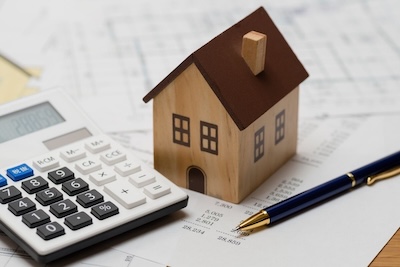
See what expats really spend in the Philippines — with real figures on housing, food, and everyday costs.

Discover practical visa routes for expats, retirees, and long-stay visitors planning life in the Philippines.
Back to Top
